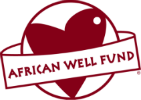The first week in our ‘Looking Back’ series featured Uganda, a country
where the African Well Fund has funded four projects. With a population
of 25 million, as few as 30 percent of whom have access to safe water,
there’s much room for growth.
In 2010, AWF partnered with Africare on a project in the Ntungamo
District of Uganda. The endeavor complemented work already being done in
the area, namely Africare’s COPE (Community-based Orphan care,
Protection, and Empowerment) program, which aimed to reduce the
socio-economic impact of HIV/AIDS on orphans and other vulnerable
children. COPE worked in 73 schools in Uganda.
The COPE program was very successful, increasing school attendance while
decreasing school drop-out rates. However, that very success strained
sanitation infrastructure in rural schools. With more students
attending, pupil to latrine ratios became untenable, reaching as high as
340:1 with waiting times as long as six hours per student.
The cost of not using proper facilities was even greater. Eighty percent of diseases affecting rural communities are water related. Outbreaks of hepatitis E, diarrhea, typhoid, and cholera could all be traced back to a lack of protected water and proper sanitation facilities. The odds for school children were still worse- as many as 90 percent were endangered by worms.
There were other issues as well – girls were subject to harassment walking to and from water sources, and all children missed valuable time to learn and play while waiting in line for latrines.
In order to maintain the gains in attendance from the COPE program, as well as promote good hygiene, AWF funded new facilities in five area schools.
The exact make-up of the new facilities depended on need. Three schools received new ventilated pit latrines that were both user friendly and afforded privacy for students at school. Two schools received rainwater harvesting tanks. Another received a protected pump well. In addition, three schools had pipes laid which extended water to the girls’ dormitories, providing a safe and private source of water.
All schools received additional training, both for students and adults. Community members were recruited to form Water User Committees for each school to ensure that the new facilities were maintained. Students participated in school hygiene competitions and performed educational plays on the importance of good hygiene.
Overall, 2,799 students and 15,000 surrounding community members were served by the project.
Stay tuned for a personal story from one of the students of an affected school!




